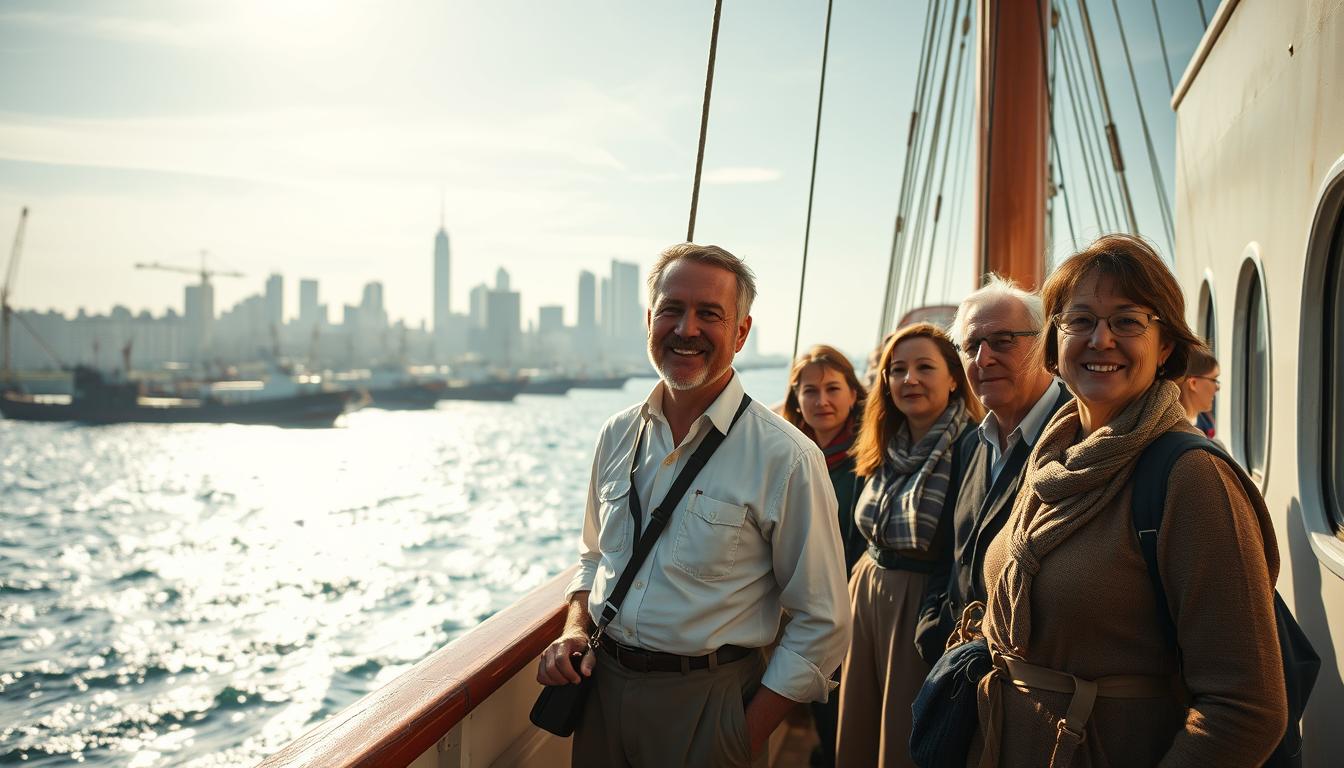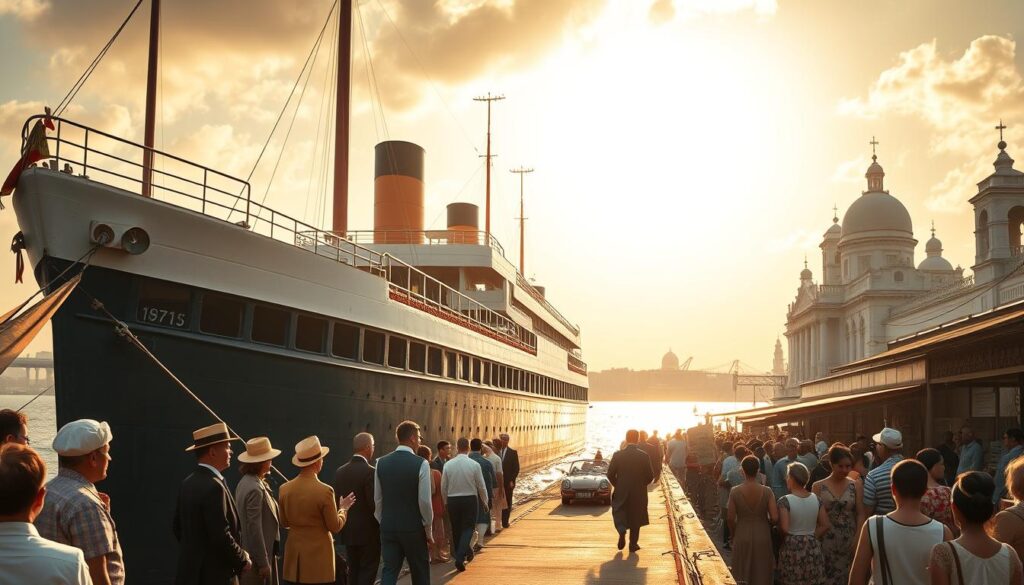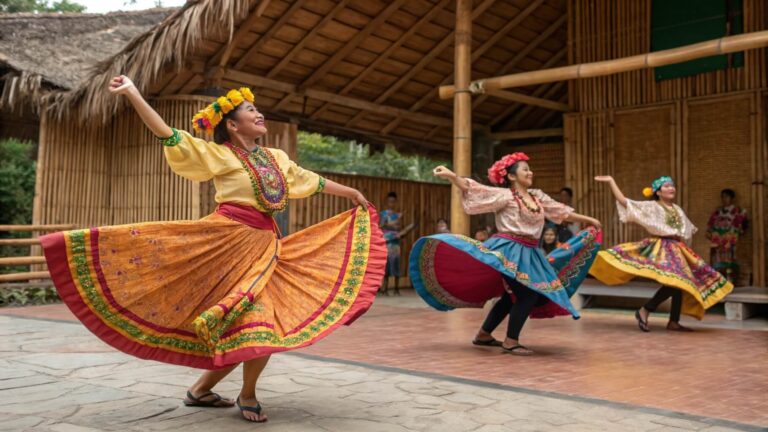The Thomasites: Pioneers of Philippine Education

In July 1901, a group of 600 educators boarded the USAT Thomas in San Francisco. Their mission? To reshape learning across Southeast Asia. Funded by the U.S. government with $105,000—nearly $4 million today—these men and women carried textbooks instead of weapons.
The month-long voyage ended in Manila on August 21. Among them were graduates from top institutions like the University of Michigan. Many had never left America before. Their assignment went beyond classrooms: create a public school system from scratch while training local instructors.
Challenges began immediately. Salaries arrived late. Tropical diseases spread quickly. Yet within years, they established institutions like the Philippine Normal School. English became the medium for subjects ranging from agriculture to trades.
This effort wasn’t purely educational. Colonial leaders saw schools as tools for cultural assimilation. Through blackboards and lesson plans, American ideals blended with Filipino traditions. The results still echo in modern universities across the islands.
Historical Context: American Colonial Influence in Philippine Education
Three centuries of Spanish rule left fragmented learning systems across the islands. Religious orders controlled classrooms, teaching Latin and catechism to elite families. By 1900, only 30% of men and 10% of women could read basic texts.
Spanish Legacy and the Need for Reform
The 1863 Education Decree promised public schools but delivered limited results. Catholic priests resisted secular programs, keeping most Filipino children from classrooms. Fewer than 1,500 schools operated nationwide when U.S. forces arrived.
American officials found ill-equipped institutions focused on memorization. “Schools existed,” noted one report, “but practical skills did not.” This gap fueled demands for vocational training and universal access.
Early American Involvement and the Formation of Public Instruction
The U.S. Army opened seven experimental schools in 1899, using soldiers as temporary teachers. General Arthur MacArthur declared education vital for “winning hearts through notebooks.”
Civilian leadership followed swiftly. Governor William Howard Taft’s Philippine Commission created the Department of Public Instruction in 1901. Their mandate: build a free school system reaching every province. English became the primary language of instruction, replacing Spanish and local dialects.
These reforms laid groundwork for 600 educators arriving later that year. Normal schools trained local teachers while new curricula blended academic subjects with farming techniques. For the first time, education reached mountain villages and coastal towns alike.
The Thomasites: Pioneers of Philippine Education
On July 23, 1901, 526 educators from 43 U.S. states boarded the army transport USAT Thomas. Their luggage included textbooks, baseball equipment, and cameras—tools for reshaping learning in distant provinces. After 32 days at sea, they reached Manila Bay on August 21.

From Quarantine to Classroom Assignments
New arrivals faced strict quarantine in Intramuros’ walls. Many wrote about Manila’s tropical heat in diaries. Frederick G. Behner noted: “Mosquito nets became our nightly armor against unseen foes.” By September, the Philippine Commission assigned teachers to remote areas—some traveled weeks by boat to reach posts.
Obstacles and Lasting Achievements
Diseineses claimed 27 lives within two years. Cultural gaps also challenged instruction. Despite this, educators established 1,000 schools by 1902. They trained local teachers and introduced subjects like civics alongside farming techniques.
| Challenge | Solution | Outcome (1901-1905) |
|---|---|---|
| Language barriers | English language immersion | 70% literacy increase |
| Limited supplies | Improvised teaching aids | 3,000+ classrooms built |
| Health risks | Mobile medical units | Teacher mortality halved |
George N. Anderson’s work in Pampanga became a model for vocational schools. By 1905, their efforts reached 500,000 students—a foundation for today’s public education system.
Impact on Philippine Educational System and Cultural Assimilation
American educators reshaped Philippine learning through structured reforms that blended academic rigor with cultural transformation. Their work created institutions still thriving today while embedding lasting social changes.
Establishment of a Modern Public School System
The Department of Public Instruction, led by William Howard Taft, mandated free elementary schools in every town. By 1905, over 3,000 institutions operated nationwide. Key milestones included:
| Institution | Year Founded | Legacy |
|---|---|---|
| Philippine Normal School | 1901 | Trained 80% of early local teachers |
| Cebu High School | 1902 | First public secondary school |
| University of the Philippines | 1908 | Flagship state university |
New teaching methods replaced rote memorization. “We teach children to think, not recite,” wrote educator Mary Fee. Vocational programs prepared students for farming and trades, aligning education with economic needs.
Long-Term Cultural and Social Legacies
English became the bridge language, with 65% of subjects taught in it by 1910. This linguistic shift enabled global connections but also reshaped local culture. Traditional festivals now mix indigenous dances with American-style marching bands.
The educational system became a vehicle for democratic ideals. Civic lessons emphasized voting rights and community leadership. Today, 92% of Philippine universities retain English as their primary language of instruction—a direct legacy of early reforms.
Conclusion
Over a century later, the foundations laid by American educators continue shaping classrooms across the archipelago. Their arrival in 1901 sparked rapid development of a public education system, reaching remote villages through coordinated efforts by the Department Public Instruction.
Within five years, these teachers established over 3,000 schools serving half a million students. They introduced English as the primary language of learning while training local instructors—a dual approach that fueled 70% literacy gains by 1905.
Cultural transformations emerged alongside academic reforms. Blended curricula wove democratic ideals into subjects like agriculture and civics. Today’s high school programs retain this fusion of practical skills and civic values.
The legacy endures in modern institutions and teaching methods. Over 90% of universities still use English for instruction, maintaining global connections first forged through early 20th-century classrooms. For Filipino children, access to free schooling remains the most enduring gift from this cross-cultural educational mission.






